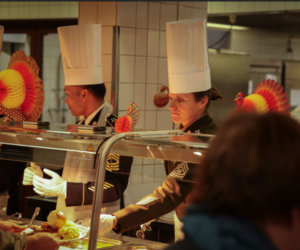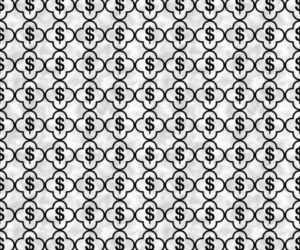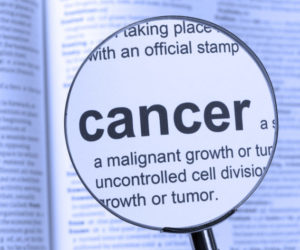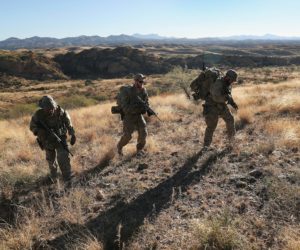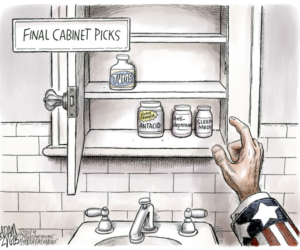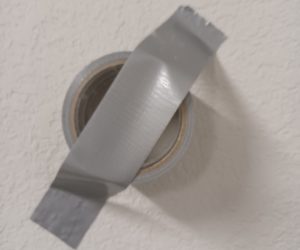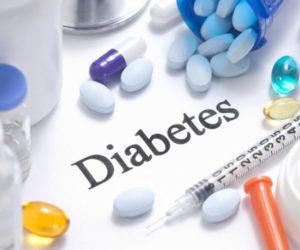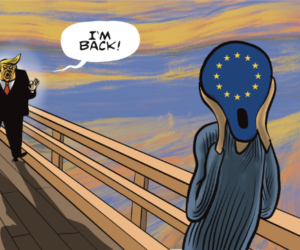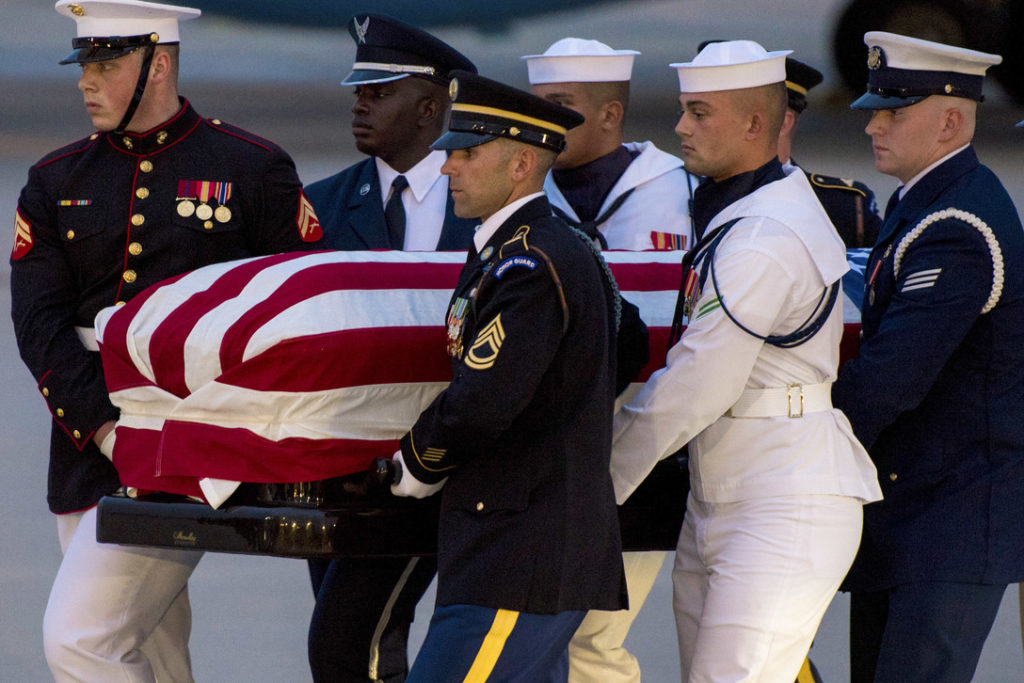
UPDATE:
Sen. John McCain honored with a “missing man” formation flyover at the site of his private burial service at the US Naval Academy in Annapolis, below (Screen capture CNN News)
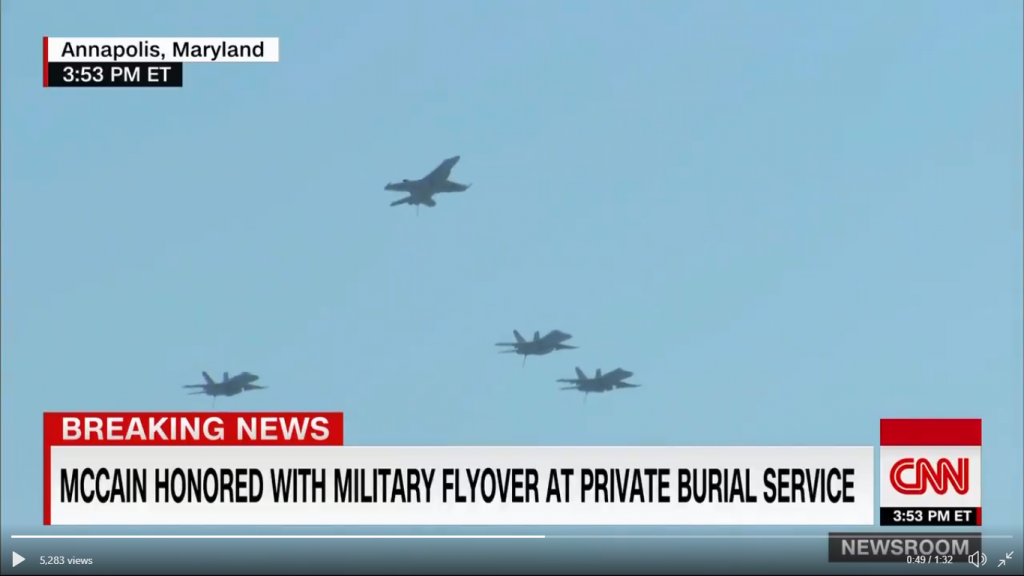
Original Post
Today, Captain John S. McCain will be laid to rest.
While he could have been interned at Arlington National Cemetery, McCain chose to rest at Annapolis next to a Naval Academy classmate and lifelong friend, Adm. Chuck Larson.
John McCain was indeed, in every aspect, a Navy man’s man.
An Annapolis graduate, he followed the traditions set by his father and grandfather – both four-star admirals – who would shape and influence his entire career.
After six years of service as a naval aviator, he deployed to Vietnam in 1967, where he flew some of the most daring and dangerous missions of that war until that fateful day, 26 October 1967, when on his 23rd mission — this time, over Hanoi — an SA-2 Guideline missile hit his A-4.
The rest is history.
In, “Farewell to a Legend Shipmate,” Elizabeth M. Collins in Navy Live, the official blog of the U.S. Navy, narrates the rest of that amazing story.
Here are some excerpts, along with memorable photographs of a true patriot, a true war hero – and don’t let anyone tell you otherwise.
“[John McCain] graduated from the U.S. Naval Academy in 1958 – fifth from the bottom of his class – and headed for flight school.
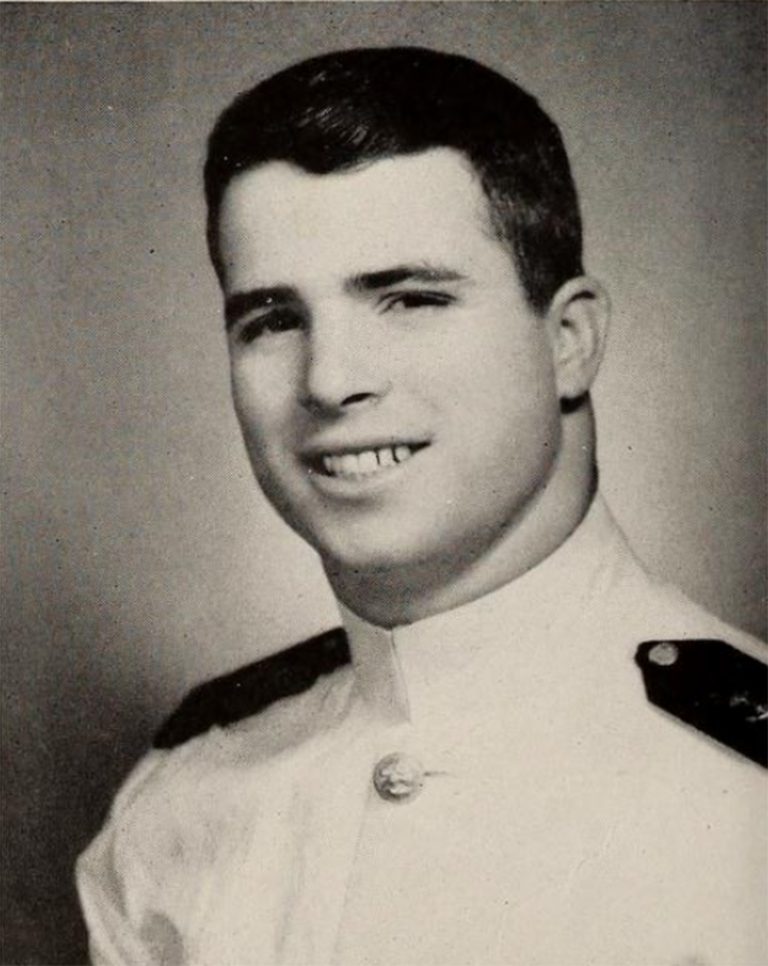
…when war came, he was ready. McCain deployed to Vietnam in 1967 as an A-4 Skyhawk pilot.
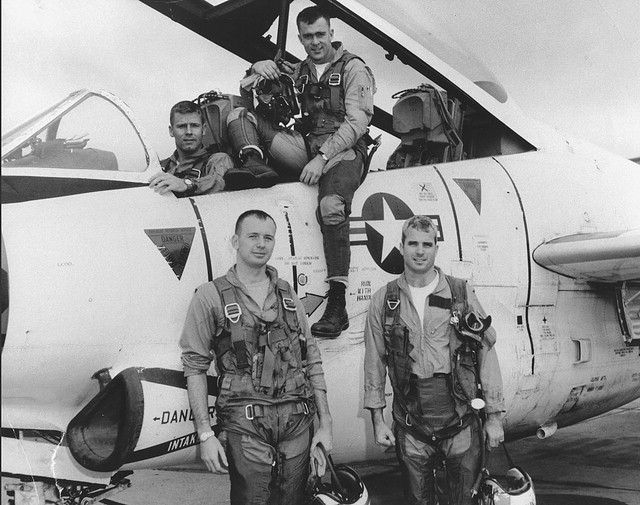
McCain and his fellow pilots took off Oct. 26, 1967, and were picked up by North Vietnamese radar almost immediately. McCain soon had an SA-2 Guideline missile “the size of a telephone pole” on his tail.
As he released his own bomb, the missile “blew the right wing off my Skyhawk dive bomber,” he told U.S. News & World Report in 1973. “It went into an inverted, almost straight-down spin.”
McCain bailed out upside down at a high speed. The force of the ejection broke his right leg, both arms, tore his helmet off and knocked him unconscious. He landed in a lake.
“I hit the water and sank to the bottom,” McCain wrote in his U.S. News account. “I did not feel any pain at the time and was able to rise to the surface. I took a breath of air and started sinking again. Of course, I was wearing 50 pounds, at least, of equipment and gear. I went down and managed to kick up to the surface once more. I couldn’t understand why I couldn’t use my right leg or my arm. I was in a dazed condition. I went up to the top again and sank back down. This time I couldn’t get back to the surface. I was wearing an inflatable life-preserver-type thing. … I reached down with my mouth … and inflated the preserver and finally floated to the top.”
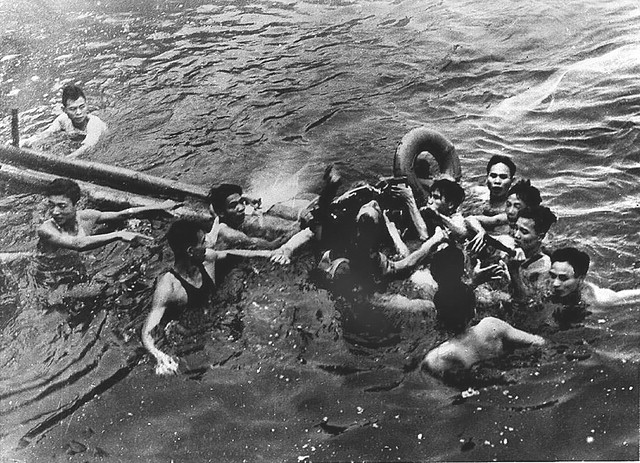
For the next five and a half years, McCain, who frequently suffered from dysentery, would be starved, beaten, tortured and put in solitary confinement where he spent two of his five and a half years in captivity.
His captors, hoping to capitalize on the propaganda value of releasing the son of Adm. McCain, offered him the chance to go home early. His senior ranking officer recommended that he accept the offer because his injuries qualified McCain for early release.
“McCain refused because he worried about the propaganda value that North Vietnam might derive from the release,” said NHHC historian John Sherwood, Ph.D.
His refusal infuriated his jailor, who said, “Now, McCain, it will be very bad for you.”
Finally, brutalized by four days of near constant torture, McCain reached the end of his rope. He signed a confession “about black crimes and other generalities. … I felt just terrible about it. … I had learned what we all learned over there: Every man has his breaking point. I had reached mine.”
Horrified by what he had done, McCain was able to find new inner strength and continue resisting.
He was finally released in 1973 after the U.S. and North Vietnam signed peace agreements.
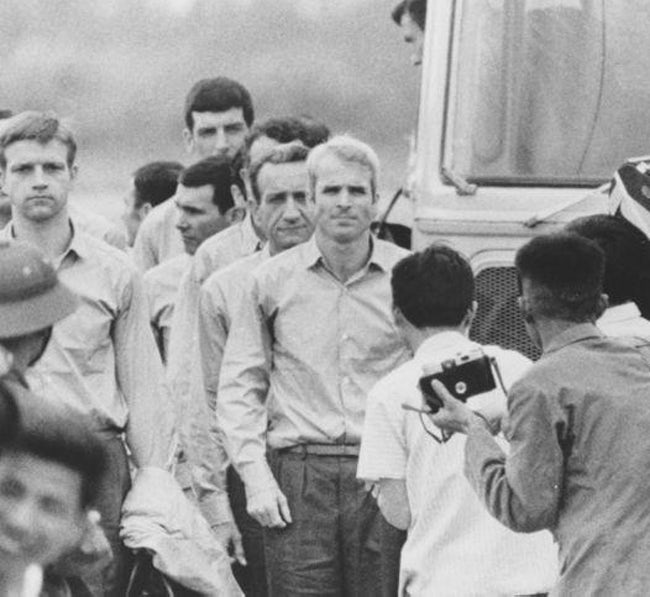
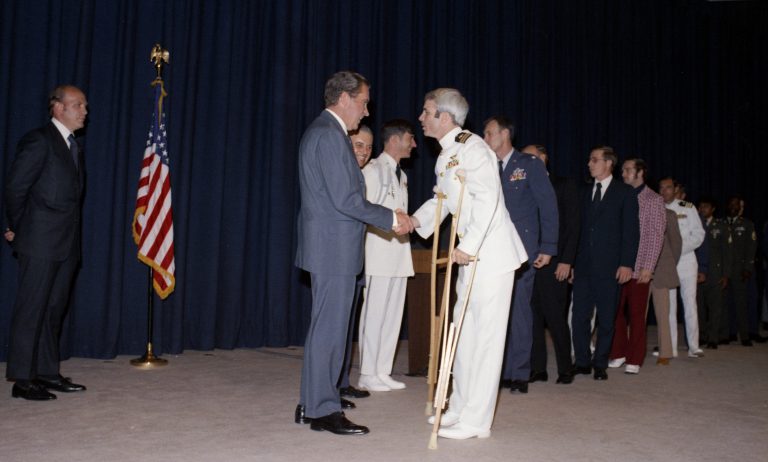

Former Prisoner of War Lieutenant Commander John S. McCain III sees his father for the first time since August 1967.”
After his release, McCain spent almost five months receiving medical treatment. He then attended the Naval War College and served in the Navy’s Office of Legislative Liaison in the Senate.
McCain then decided “he could better serve his country in politics, and retired from the Navy as a captain in 1981.”
The rest is also history as perhaps best expressed by his beloved daughter, Meghan McCain, when the nation, on Saturday at the Washington National Cathedral, bid farewell to her father.
About her father:
That fervent faith, that proven devotion, that abiding love — that is what drove my father from the fiery skies above the Red River Delta to the brink of the presidency itself…Dad, your greatness is woven into the life and liberty of the country you sacrificed so much to defend.
About America: “The America of John McCain has no need to be made great again, because America was always great.”
All this while the president of the United States was tweeting and “Played Golf.”
Lead photo: A Joint Service Arrival Team carry the flag-draped casket of Sen. John S. McCain III at Joint Base Andrews, Md., Aug. 30, 2018.(U.S. Air Force photo by Airman 1st Class Jalene Brooks)
Photos: DoD, U.S. Navy, U.S. Air Force, Library of Congress, National Archives


